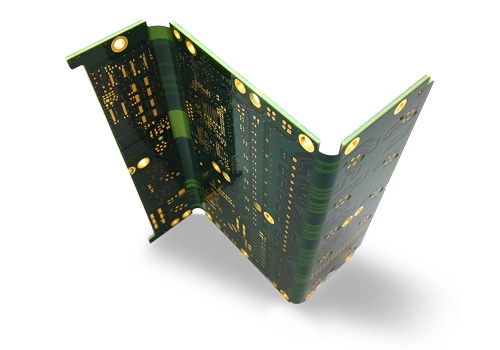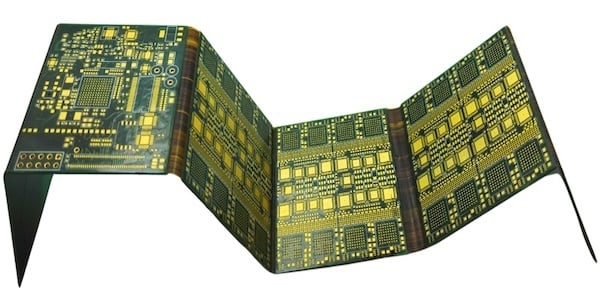Rigid-Flex PCBs play a critical role in modern electronics by seamlessly integrating rigid and flexible circuit substrates into a unified board. This innovation facilitates the creation of compact, lightweight designs essential for devices that demand both structural stability and flexibility, like smartphones, wearable technology, and medical instruments. Recognizing cost factors is essential for strategic project planning, guiding choices related to materials, manufacturing methods, and assembly techniques. By carefully managing design intricacies alongside production feasibility, developers can achieve superior performance and cost-effectiveness in advancing electronic systems.

Best FPC's Rigid-Flex PCBs Capability
Best Technology, a leading manufacturer of rigid-flex circuit boards in China, continually enhances its capabilities to meet diverse customer needs. Here are our primary capabilities:
Layer Flexibility and Configuration
- We offer 1-10 flexible layers with options for bonded or air gap configurations.
- Rigid layers range from 1 to 40, accommodating complex designs up to 50-layer rigid-flex circuits.
Material Specifications
- Flex Core Materials: Polyimide (PI) ranging from 1/2 mil to 4 mils in adhesive or adhesives constructions.
- Copper Thickness: 1/3 OZ – 2 OZ RA or ED type in flexible circuits; 1/2 OZ to 10 OZ in rigid circuits.
- Coverlay Thickness: Polyimide options from 1/2 mil to 2 mils.
- Stiffeners: Available in polyimide, FR4, stainless steel, and aluminum to enhance structural integrity.
Additional Features and Applications
- EMI/RF Shielding: Utilization of shielding films for enhanced electromagnetic interference protection.
- Vias: Capability for blind and buried vias, supporting intricate routing requirements.
- Controlled Impedance: Offering various impedance values (e.g., 50 ohm, 90 ohm) to ensure signal integrity.
- Surface Finishing: Options include ENIG, ENEPIG, gold plating, and immersion silver for improved conductivity and durability.
- IPC 6013 Standards: Compliance with Class II & Class III standards, ensuring reliability and performance.
High Density Applications
Rigid areas support high-density device integration, while flexible circuits allow finer line width and spacing, optimizing space for additional product features.
Broad Applications
From communication and consumer electronics to medical, automotive, and military applications, our boards cater to diverse industry needs.
Advanced Features
Our capabilities include air gap technology, controlled impedance, EMI shielding, panelization, stiffeners, PSA, and circuit assembly (SMT), ensuring versatility and performance in complex designs.
Best Technology remains committed to advancing rigid-flex PCB technology, meeting the evolving demands for smaller, more powerful electronic products across various industries.
Factors Affecting Rigid-Flex PCB Costs
Material Costs
Material costs in rigid-flex PCB manufacturing encompass various elements crucial to performance and durability. Flexible substrates like polyimide (PI) and rigid materials such as FR4 or metal cores vary significantly in cost based on factors like thickness, flexibility, and thermal properties. Adhesives used to bond these layers also impact costs, with options ranging from standard to high-performance adhesives affecting durability and reliability. The quality and sourcing of these materials play a critical role; while higher-quality materials enhance performance, they can escalate production expenses. Manufacturers must carefully balance material selection to meet design specifications while optimizing costs through strategic sourcing and efficient material management.
Design Complexity
The complexity of the PCB design directly influences manufacturing costs. Factors such as the number of layers, intricate bend radius requirements, and specific surface finish criteria contribute to increased complexity and higher production costs. For instance, designs with multiple rigid and flex layers, tight bend radii for compact form factors, and demanding surface finishes necessitate specialized manufacturing processes like laser drilling for micro-vias or impedance control to maintain signal integrity. Managing design complexity effectively is essential for controlling costs while ensuring the PCB meets functional and performance requirements.
Manufacturing Processes
Fabrication and assembly processes significantly impact overall PCB costs. Standard processes include layer alignment, etching, and lamination, while specialized techniques such as laser drilling or controlled impedance require advanced equipment and expertise, adding to manufacturing overhead. Each process step affects production timelines and cost efficiencies, influencing the final pricing of the PCB. Manufacturers must evaluate the trade-offs between process complexity, production scalability, and cost implications to deliver competitive pricing without compromising quality or performance.

Quantity and Batch Size
Economies of scale play a pivotal role in determining per-unit costs for rigid-flex PCBs. Larger production volumes generally result in reduced costs per board due to optimized material purchasing, streamlined manufacturing processes, and enhanced operational efficiencies. Conversely, prototype runs or small batch sizes involve higher per-unit costs due to setup expenses and less efficient production workflows. Manufacturers must strategically consider batch size, balancing initial investment against long-term cost savings to meet project timelines and budget requirements effectively.
Component Integration and Assembly
The complexity of component integration and assembly techniques directly impacts PCB manufacturing costs. Higher component densities and varied types (such as surface-mount technology or through-hole) require precise assembly processes, influencing labor costs and equipment utilization. Automated assembly methods offer efficiency advantages but often incur higher initial setup costs compared to manual alternatives. Choosing the appropriate assembly technique based on project specifications and budget constraints is crucial for optimizing manufacturing costs while ensuring reliable product performance.
Cost Breakdown: Typical Pricing Structures
Overview of Typical Pricing Models in the Rigid-Flex PCB Industry
Pricing models in the rigid-flex PCB industry involve a comprehensive breakdown of costs across various components and manufacturing stages. These models encompass material costs, labor expenses, overheads, and profit margins, facilitating competitive pricing strategies aligned with market demands and customer expectations.
Cost Breakdown per Component (Rigid Areas, Flex Areas, Connectors, etc.)
A detailed cost breakdown per component includes rigid and flexible areas, connectors, and specialized features such as impedance control or EMI shielding. Each component's contribution to the overall cost varies based on design complexities and production specifications, underscoring the importance of transparent pricing structures for informed decision-making and cost management.
Examples
Examples of Projects with Varying Costs Based on Different Factors
Projects across consumer electronics, medical devices, and aerospace sectors illustrate varying cost structures influenced by design complexity, material selection, and industry-specific regulations. For example, high-volume consumer electronics prioritize cost efficiency and rapid production cycles, while aerospace applications demand stringent reliability standards, impacting manufacturing costs accordingly.
Comparison of Cost Variations for Different Applications
Comparing cost variations across different applications highlights the influence of specific industry requirements on rigid-flex PCB pricing. Consumer electronics emphasize scalability and cost-effectiveness, whereas medical devices prioritize regulatory compliance and reliability, and aerospace applications require robust performance and durability, resulting in diverse cost structures across sectors.
Strategies for Cost Optimization
Design Considerations to Reduce Manufacturing Costs
Optimizing PCB designs through simplification, standardization of components, and minimizing material waste reduces manufacturing complexities and lowers production costs. Design for manufacturability (DFM) principles ensure efficient assembly processes and enhance product reliability while optimizing overall manufacturing expenses.
Partnering with Experienced Manufacturers and Suppliers
Collaborating with experienced manufacturers and suppliers in rigid-flex PCB production provides access to advanced technologies, efficient supply chain management, and cost-effective production solutions. Strategic partnerships facilitate seamless integration of design innovations and manufacturing efficiencies, meeting cost objectives without compromising quality.
Value Engineering and Balancing Cost vs. Performance
Implementing value engineering involves evaluating cost-performance trade-offs in material selection, process optimization, and assembly methods. Balancing cost considerations with performance requirements ensures competitive pricing and superior product reliability, positioning rigid-flex PCBs competitively in diverse market segments.
Final Thoughts
Understanding the factors that influence rigid-flex PCB costs is essential for efficient project planning and cost management in contemporary electronics manufacturing. Material selection, design complexity, manufacturing processes, batch size considerations, and component integration each exert substantial influence on total expenses. By strategically optimizing designs for easier manufacturing, capitalizing on economies of scale, and collaborating with seasoned manufacturers, companies can effectively address cost challenges while delivering top-tier, competitive products. This balance of cost-efficiency and performance through value engineering guarantees that rigid-flex PCBs meet the varied needs of industries spanning consumer electronics to aerospace, promoting innovation and reliability in electronic product advancement.










 2024-06-05
2024-06-05
 BEST
BEST

.png)
.png)
.png)
.png)

.png)

